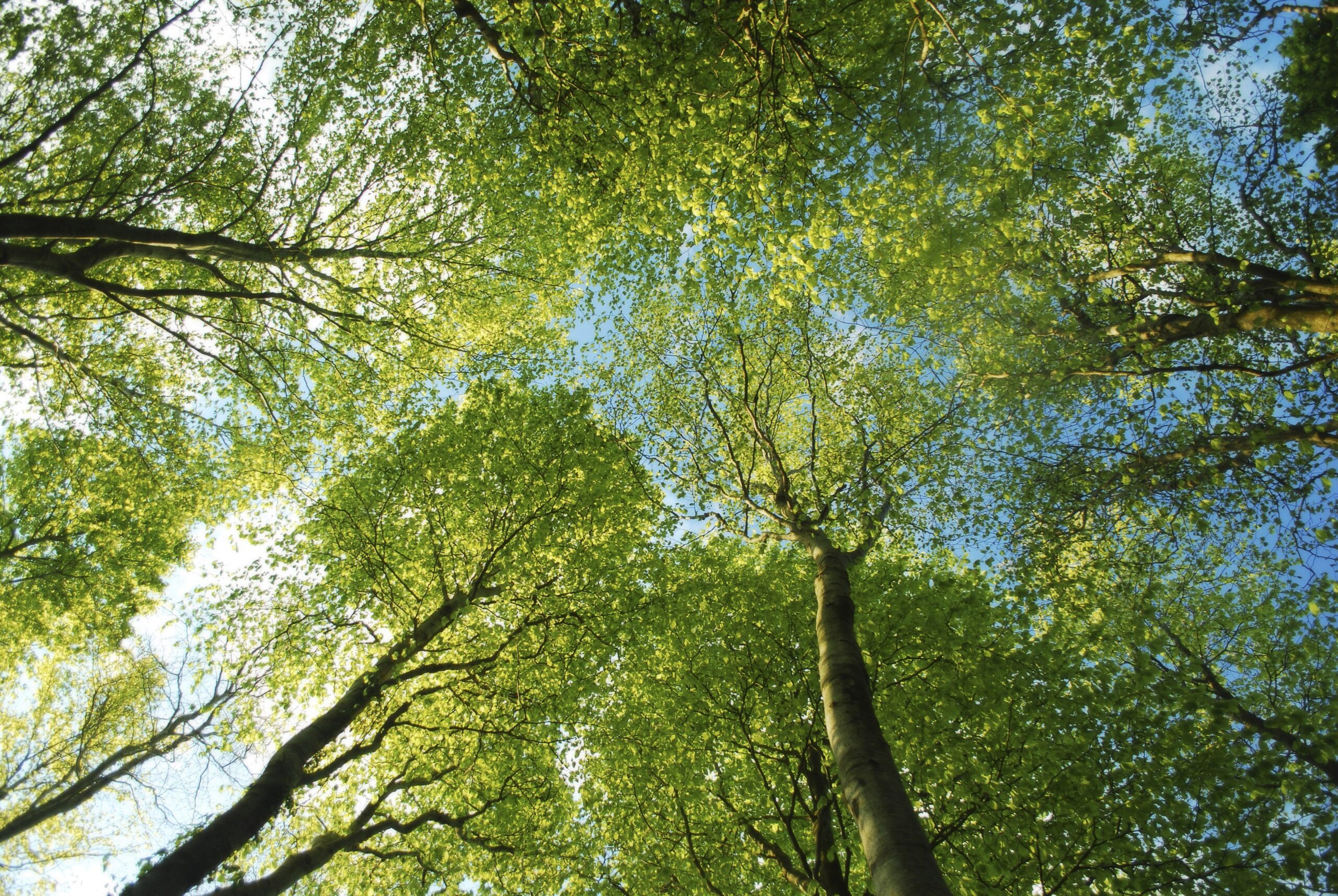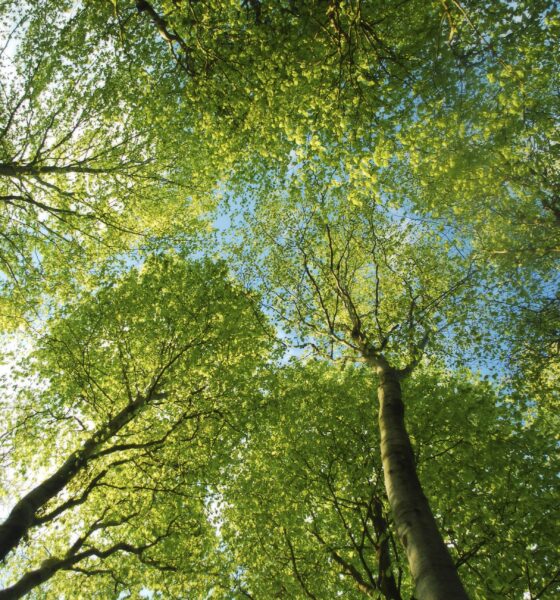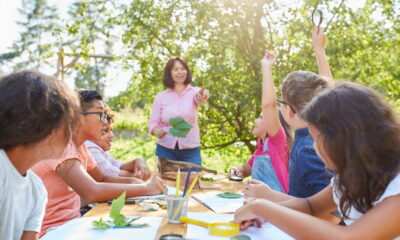

Economy
The nature of investing
The time has come for us to refocus on investing in its essential, connected form, writes Katherine Collins – to reintegrate investing with the real world, rather than the world on the screen.
In green money circles, we spend a lot of time considering ways to invest in nature, or sometimes with nature. These are big and important questions: more complete understanding of the value of nature is certainly a vital component of any sustainable investing approach.
What if we also consider investing as nature? In addition to the material bounty provided by our natural world, we also have access to great stores of wisdom that are embedded in natural organisms and natural systems.
Looking to nature as our ultimate model of a resilient, regenerative system holds tremendous potential. As Janine Benyus, biomimicry pioneer, notes, “We are searching high and low, but we already have a perfectly sustainable world: the natural world.” What if our investment processes were rooted in the same principles that guide the effective, optimised function seen in nature?
Biomimicry begins with the idea of embracing nature’s wisdom, not harvesting nature’s stuff. At its heart is a deceptively simple question: WWND – what would nature do? How would nature perform the function I’m trying to perform?
This centre point is remarkable in several ways: first, it starts with a question, with open inquiry. Biomimicry does not begin with a predetermined endpoint, even when the challenge before us has clear requirements or constraints. Second, the question is rooted in context: what would nature do here, in these circumstances? And finally, it forces us to be precise about purpose and function: what are we really trying to do, and why?
I came to biomimicry along a winding path, beginning at a low point in my career. I was struggling through a tough performance patch, as all investors eventually do, when luckily I was introduced to the work of Dr Tom Seeley of Cornell University through a meeting at the Santa Fe Institute.
Seeley’s work investigates how bees make collective decisions that are consistently terrific. For example, when bees are looking to take significant action, like swarming to a new hive location, the first thing they do is to go out and explore the environment around them.
This simple observation struck me like a lightening bolt. Here I was, staying later and later at my desk every night, building more and more convoluted models and spreadsheets, hoping that the answer would come to me through my computer screen. What I needed, instead, was to be out in the world, assessing my investment decisions in context.
That path of inquiry first led (thankfully) to recovery in my investment performance, then to studies in moral philosophy at Harvard Divinity School, inspiration and mentorship from Janine Benyus and Hazel Henderson, formal training with the Biomimicry 3.8 organisation and Dayna Baumeister, and the founding of Honeybee Capital, where our mission is to reconnect investing with the real world. And now it has led to writing my first book, The Nature of Investing, which explores the principles of biomimicry and their application to finance in depth.
Locally attuned investing
For instance, one key set of life’s principles is to be locally attuned and adaptive. This is not a simple notion of physical proximity (though that’s part of it); these ideas encompass a more complete concept of life in context.
The principles talk about fitting in to our local environments, connecting and integrating with those local systems. To thrive in any context we need to do more than just be there. We need local inputs, local relationships and local feedback loops.
Consider the amazing Namib beetle, which thrives in the desert. The beetle takes advantage of the fog that sweeps over the sand dunes at dawn. When the fog comes, the beetle raises its shell up so that the water condenses on the upturned surface. The shell has bumps that attract water at the tips and channels that then guide the droplets right into the beetle’s mouth.
This insect has found a way not just to survive in its challenging environment, but to thrive by integrating those same tough conditions into the most crucial parts of its life.
When I looked at my own investments with this idea of being locally attuned, I saw two different gaps between my intentions and my reality. The first gap was geographic: like many investors these days, I had a lot of faraway multinational holdings in my portfolio. There’s a place for global holdings, but there’s also a place for investing close to home.
Though I was investing my time, my energy – my life! – in my own community, my investment dollars were mostly elsewhere. So, over the last few years I’ve been working with our local Slow Money group, Boston-area entrepreneurs and other community-based organisations to ‘buy local’ more often for my investments as well as my groceries.
The second disconnect related to a more metaphorical kind of ‘local’, the kind that is defined by connection and mutuality, regardless of distance. My investments in some cases were not only far away geographically, but also far away in terms of their composition.
I owned some bundled-up funds of funds and some complicated securities that were supposed to protect me from market volatility. These ingredients might well belong in some of our portfolios, but I want my portfolio to be full of organisations where I have connection, whether it be to mission, people, or product. So I’ve gradually been de-layering my holdings in recent years, and reconnecting them to my own ideas and values in a less-processed way – a sort of ‘organic investing’. Simpler structures and processes, more connected to me and my life.
Vision
If we apply all of the principles of biomimicry, what might real local attunement look like? I have an idea, though it’s not drawn from a traditional investing context.
Over the past two decades, I’ve had the joy of travelling to more than 20 countries with Habitat for Humanity, offering manual labour to assist local homeowners as they constructed their houses.
On one of my early trips to Africa, the leader of the local Habitat group showed us the storeroom, which was just a small shed with tools and a few bags of cement. I was confused — where were all the other building materials? Having been an analyst covering the home-building industry in the US, I was used to seeing big stockpiles of materials near any building site.
Soon enough, I realised where the materials were: they were all around us. In the coming days, we took an oxcart down to the riverbank to shovel sand, which we then sifted by hand before mixing into mortar. We walked to the pump down the road to gather water in big, 10-gallon containers, many times each day. We dug clay from the very spot where the house was going to be located, shaping it into bricks for the walls. We went out to the forest to cut lumber for the roof framing. Aside from those bags of cement, a handful of nails, and galvanised metal sheets for the roof, the materials were all hyperlocal.
Even more importantly, the entire community was involved in the building process. Extended family, friends, and neighbors all helped on the jobsite. Some provided food and shelter for visitors. Others provided moral support, stopping by to cheer on the work and to comment on progress. The new house was not just situated within the community; its very construction was a community activity—completely locally attuned. A community investment.
The time has come for us to refocus on investing in its essential, connected form – to reintegrate investing with the real world, rather than the world on the screen.
Biomimicry provides us with a framework that embodies connection and integration, a model of our natural systems that have proven to be effective, adaptive, and sustainable. The principles of biomimicry, life’s principles, are not the newest theories: they are the oldest facts. These concepts describe how the natural world has actually functioned for 3.8 billion years.
Life’s principles give a clear and compelling guide for transforming the investment process from the roots up. The result is an investment approach that goes ‘beyond sustainability’ to form a system that is inherently resilient and regenerative. Most importantly, they are the basis of an approach that re-aligns investing with the world it was originally meant to serve.
Instead of efficient, effective. Instead of rigid, resilient. Instead of transactional, relational. Instead of maximised, optimised. This is the true nature of investing.
 Katherine Collins is founder and CEO of Honeybee Capital, a financial firm dedicated to reconnecting investing with the real world. She is author of the book, The Nature of Investing, and her newest neighbours in Massachusetts are several thousand honeybees. This article was originally published by GreenMoney Journal at GreenMoney.com.
Katherine Collins is founder and CEO of Honeybee Capital, a financial firm dedicated to reconnecting investing with the real world. She is author of the book, The Nature of Investing, and her newest neighbours in Massachusetts are several thousand honeybees. This article was originally published by GreenMoney Journal at GreenMoney.com.
Photo: James Knight via freeimages
Further reading:
Sustainable investment is about optimisation, not maximisation
From ethics to sustainability: shifting the investment debate for 2014
Do you know what your money is doing while you sleep?


 Environment10 months ago
Environment10 months agoAre Polymer Banknotes: an Eco-Friendly Trend or a Groundswell?

 Environment12 months ago
Environment12 months agoEco-Friendly Home Improvements: Top 7 Upgrades for 2025

 Features9 months ago
Features9 months agoEco-Friendly Cryptocurrencies: Sustainable Investment Choices

 Features10 months ago
Features10 months agoEco-Friendly Crypto Traders Must Find the Right Exchange





























